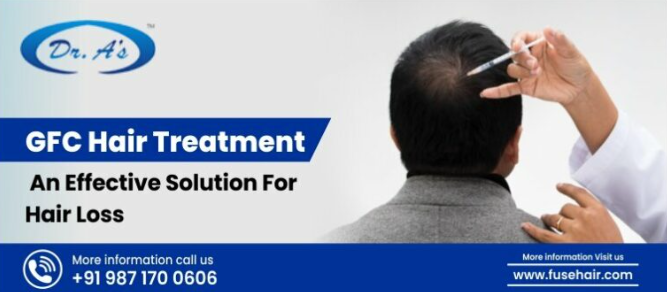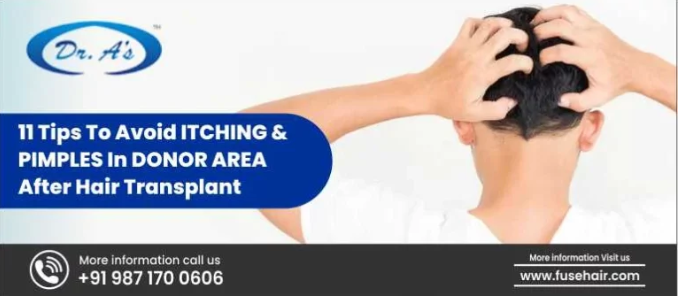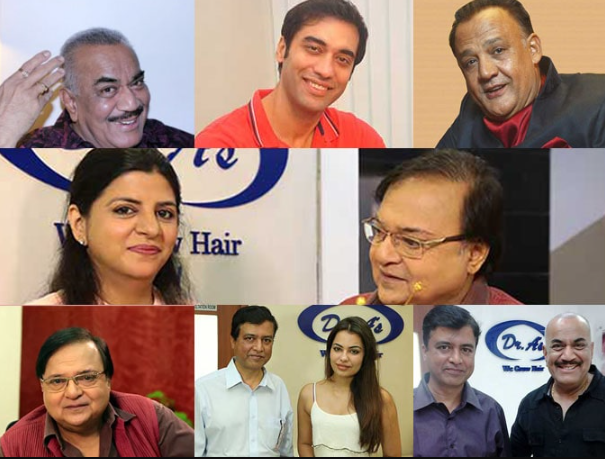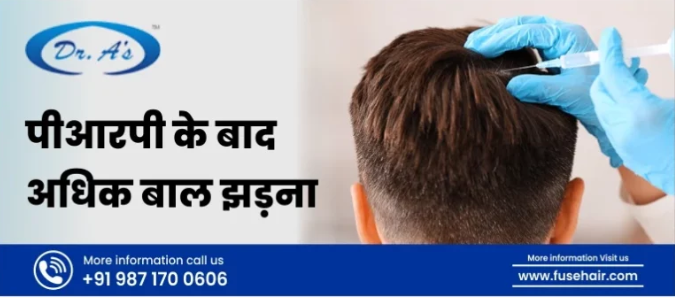Failed Hair Transplant, Hair Transplant in India
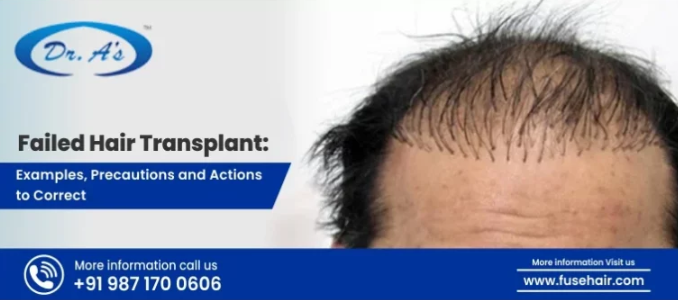
Hair loss can be a distressing experience for many individuals, leading them to explore various options for hair restoration, with hair transplant surgery being one of the most popular choices. While hair transplants can offer effective and long-lasting results, they are not immune to potential failures. It is necessary to be aware of the reasons behind failed hair transplant, learn how to prevent them, and know the corrective measures available, which are crucial for anyone considering this procedure.
Different Cases of Hair Transplant Failures
A failed hair transplant can occur for a number of reasons, resulting in serious hair transplant regrets. Here are some of the common issues to be aware of when researching for surgeons and clinics to perform your hair transplant:
Excessive harvesting from the donor area
Skill is required not only during the procedure itself but also in planning how much hair is to be harvested and the areas of the scalp. Overestimating the number of hair grafts needed can lead to pain, discomfort, unsightly wounds, and difficulties in future transplants if too much hair is removed.
Unnecessary or significant scarring
Poor technique can leave unnecessary scarring in both the donor and transplant areas. FUT procedures are more likely to result in visible scarring compared to a failed FUE hair transplant.
Skin or hair infections
When hygiene and medical standards are substandard, infections can occur in the scalp’s skin tissue and hair follicles, although they are rare (less than 1% of surgeries) and usually treatable. Symptoms include abscesses, pus, redness, itchiness, and excessive swelling. If untreated, infections can progress to sepsis, a life-threatening condition.
Necrosis and tissue damage
Necrosis occurs when blood flow to the skin is cut off, leading to skin tissue death and scarring. Administering excessive epinephrine to stem bleeding can cause necrosis.
Unnatural hair transplant results
Poor transplant techniques can lead to unnatural-looking results, causing increased self-consciousness post-surgery. Issues like unnatural hairline design and misdirected hair transplantation are common culprits for poor outcomes. It’s necessary to understand how to achieve natural-looking results when considering a hair transplant.
Outdated hair transplant techniques
Some clinics may use outdated techniques like hair plugs, which can create an unnatural appearance and increase the risk of infection and extended recovery time.
Ways to Correct a Failed Hair Transplant
Correcting a failed hair transplant requires careful consideration and often involves specific procedures to address unwanted outcomes. Here are ways to rectify issues that may arise from a failed hair transplant:
Scalp revision
Persistent scarring after the healing period indicates a failed transplant. Scalp revision or scalp pigmentation procedures can effectively remove these scars, whether they are in the donor or recipient site, restoring a smoother scalp appearance.
Restoration of the hairline
A poorly designed or misconstrued hairline is a common issue after a failed transplant. Consulting an experienced surgeon is crucial for restoring a natural-looking hairline through further grafting and transplant procedures.
Extraction of wrong grafts
Inexperienced surgeons may transplant grafts incorrectly, leading to unnatural hairlines and disorganized grafts on the scalp. Correcting this involves extracting the wrongly placed grafts and re-transplanting them in the correct positions, aligning them with the natural hair direction for a more harmonious look.
Precautions To Take Before a Hair Transplant
Hair transplant procedures are generally safe and effective, but taking certain precautions before the surgery can help minimize the risk of complications and increase the chances of a successful outcome. Here are 10 precautions to consider:
Research and select a board-certified dermatologist or plastic surgeon with extensive experience in hair transplant procedures.
Prior to the surgery, have a comprehensive consultation with your surgeon to discuss your medical history, expectations, and any concerns.
Your surgeon will provide specific instructions to follow before the surgery, such as avoiding certain medications like blood thinners that can increase bleeding risks.
If you smoke or consume alcohol, it’s advisable to stop both several weeks before the procedure, as they can interfere with healing and increase the risk of complications.
Eat a balanced diet rich in nutrients, especially vitamins like vitamin C, which is essential for collagen production and wound healing.
Drink plenty of water in the days leading up to the surgery to keep your body well-hydrated, which supports overall health and aids in recovery.
Refrain from rigorous exercise or activities that may increase blood pressure or cause sweating for a few days before the surgery.
Ensure you get enough sleep and rest before the procedure to help your body prepare for the surgery and recovery process.
Minimize stress levels as much as possible, as stress can affect your immune system and overall well-being, which are important for successful healing.
Factors Affecting the Success of a Hair Transplant
When considering a hair transplant, understanding the factors that influence its success is crucial for achieving the desired results. Here are the key elements that impact the success of a hair transplant:
Surgeon’s Skill and Experience
The expertise of the surgeon performing the hair transplant is paramount. A skilled and experienced surgeon can ensure precise graft extraction, strategic implantation, and an artistic hairline design that blends seamlessly with your natural hair, enhancing the overall outcome.
Technique Utilized (FUT vs. FUE)
The choice between Follicular Unit Transplantation (FUT) and Follicular Unit Extraction (FUE) techniques can affect the results. FUT involves taking a strip of scalp for grafts, while FUE involves extracting individual follicular units. Each technique has its advantages and considerations, so collaborating with your surgeon to determine the most suitable approach is essential.
Donor Hair Quality and Supply
The quality and quantity of hair follicles in the donor area play a significant role in the success of the transplant. A healthy donor area with robust follicles ensures an adequate supply of grafts for transplantation, contributing to optimal results.
Genetic Factors
Genetic predispositions to hair loss can influence the overall outcome of the transplant. Understanding your family history of hair loss can help set realistic expectations and guide the surgical approach.
Healing and Postoperative Care
Proper postoperative care is crucial for successful hair transplant results. Following your surgeon’s instructions regarding wound care, medication, and lifestyle adjustments promotes optimal healing graft survival and minimizes the risk of complications.
Realistic Expectations
Setting realistic expectations about the timeline and outcome of the hair transplant is essential. Hair growth after a transplant takes time, and understanding the gradual nature of results can prevent unnecessary concerns during the initial stages.
Collaboration with Your Surgeon
Effective communication and collaboration with your surgeon throughout the pre-operative, operative, and postoperative phases are key to achieving optimal results. Regular follow-up appointments allow for monitoring progress and addressing any issues promptly.
By considering these factors and working closely with a reputable clinic like Dr. A’s Clinic for the Best Hair Transplant in Delhi, individuals can embark on their hair restoration journey with confidence, ensuring the best possible outcome.
Cost of Restoring a Failed Hair Transplant in India
The hair transplant in India failure rate can vary significantly based on several factors, including the type of repair treatments needed and the clinic or surgeon you choose. Here are some common repair treatments and an approximate cost range for each:
Combined Repair
This may involve a combination of techniques to address various issues such as unnatural grafts, hairline irregularities, and scarring. The cost can range from INR 50,000 to INR 2,00,000 or more, depending on the complexity of the case.
Graft Excision
Removing unnatural or poorly placed grafts and re-implanting them in a more aesthetically pleasing manner can cost between INR 30,000 to INR 1,50,000, depending on the number of grafts and the extent of correction required.
Hairline Restoration
Correcting an unnatural or irregular hairline typically involves meticulous placement of grafts to create a natural-looking hairline. Costs can range from INR 30,000 to INR 1,50,000 or more, depending on the number of grafts needed.
Camouflage
Techniques such as scalp micropigmentation (SMP) or hair fibers may be used to camouflage visible scars or thinning areas. Costs can vary widely based on the area to be covered and the technique used, ranging from INR 20,000 to INR 1,00,000 or more.
Scar Repair
Treating visible scars from a failed hair transplant can involve methods like scar revision surgery or laser treatments. Costs may range from INR 30,000 to INR 1,50,000, depending on the size and severity of the scar.
Conclusion
In conclusion, while hair transplant surgeries offer promising solutions for hair restoration, they are not without risks of failure. Being conscious of the common reasons for failures, taking necessary precautions, and exploring corrective measures with experienced surgeons are vital steps to ensure successful and natural-looking outcomes in hair transplant procedures.
At Dr. A’s Clinic, we specialize in providing the best solutions for failed hair transplants. With cutting-edge techniques and a team of experienced professionals, we understand the challenges you may have faced and are here to help restore your confidence. Our unique approach ensures that each client receives customized treatment plans tailored to their unique needs. From advanced hair restoration procedures to comprehensive consultations, we prioritize your satisfaction and strive for natural-looking results.
Note: IndiBlogHub features both user-submitted and editorial content. We do not verify third-party contributions. Read our Disclaimer and Privacy Policyfor details.




